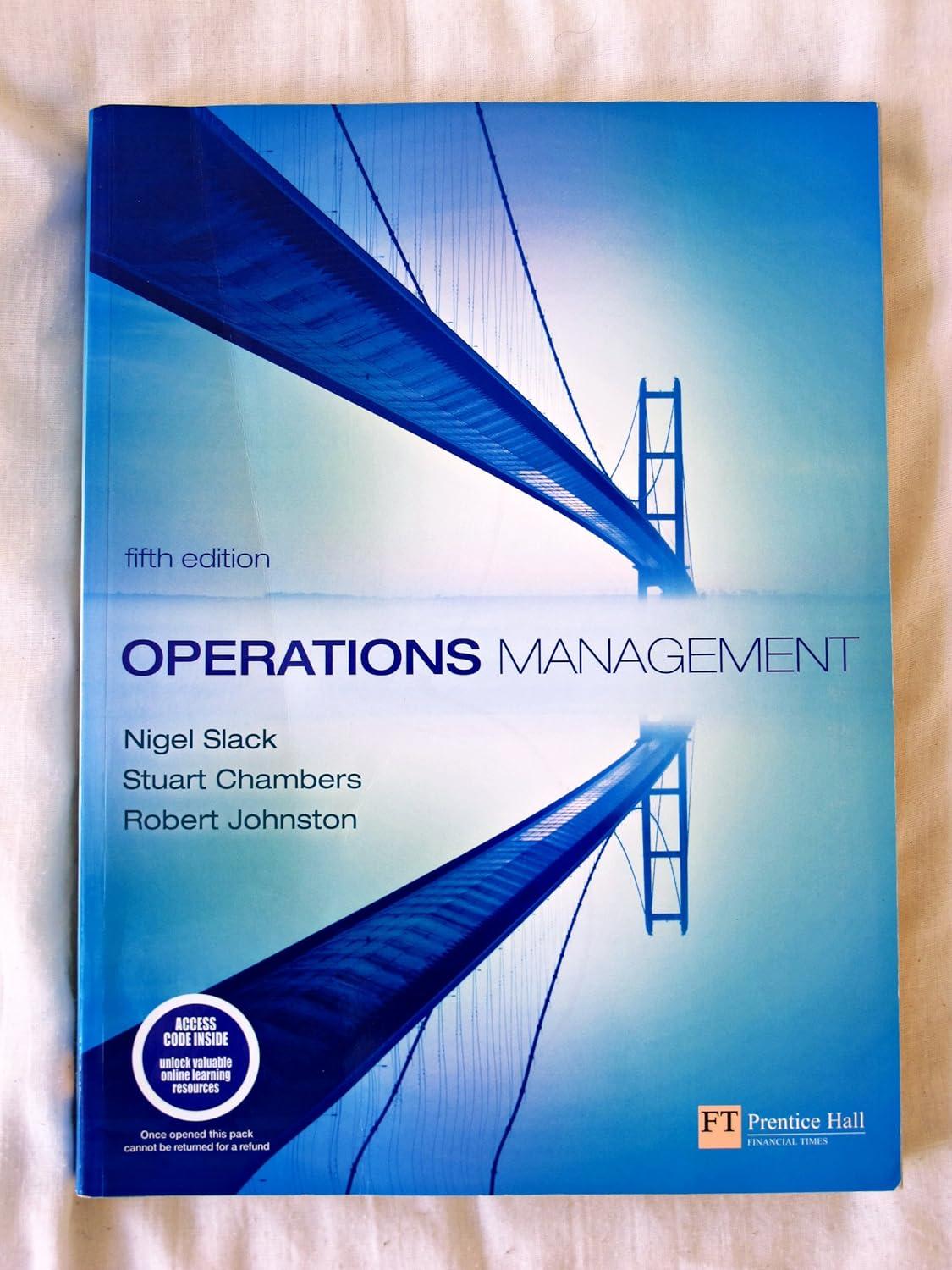'There must be a better way of running this place!' said Dean Hammond, recently recruited General Manager...
Question:
'There must be a better way of running this place!' said Dean Hammond, recently recruited General Manager of B&B, as he finished a somewhat stressful conversation with a complaining customer, a large and loyal local building contractor. 'We had six weeks to make their special staircase and we are still late. I'll have to persuade one of the joiners to work overtime this weekend to get everything ready for Monday. We never seem to get complaints about quality . . . our men always do an excellent job, but there is usually a big backlog of work, so how can we set priorities? We could do the most profitable work first, or the work for our biggest customers, or the jobs which are most behind. In practice, we try to satisfy everyone as best we can, but inevitably someone's order will be late. On paper, each job should be quite profitable, since we build in a big allowance for waste and for timber defects. And we know the work content of almost any task we would have to do and this is the basis of our estimating system.
But overall, the department isn't very profitable in comparison to our other operations and most problems seem to end up with higher-than-anticipated costs and late deliveries!' Boys and Boden was a small, successful, privately owned timber and building materials merchant based in a small town. Over the years it had established its large Joinery Department, which made doors, windows, staircases and other timber products, all to the exact special requirements of the customers, comprising numerous local and regional builders. In addition, the joiners would cut and prepare special orders of timber, such as non-standard sections, and special profiles including old designs of skirting board, sometimes at very short notice while the customers waited. Typically, for joinery items, the customer provided simple dimensioned sketches of the required products. These were then passed to the central Estimating/Quotations Department which, in conjunction with the Joinery Manager, calculated costs and prepared a written quotation which was faxed to the customer. This first stage was normally completed within two/three days, but on occasions could take a week or more. On receipt of an order, the original sketches and estimating details were passed back to the Joinery Manager across the yard, who roughly scheduled them into his plan, allocating them to individual craftsmen as they became available. Most of the joiners were capable of making any product and enjoyed the wide variety of challenging work.
Questions
1. To what extent could (or should) Dean expect to apply the philosophies and techniques of JIT described in this chapter to the running of a staircase cell?
2. What are likely to be the main categories of costs and benefits in establishing the cell? Are there any nonfinancial benefits which should be taken into account?
3. At what stage, and how, should Dean sell his idea to the Joinery Manager and the workers?
4. How different would the cell work be to that in the main Joinery Department?
5. Should Dean differentiate the working environment by providing distinctive work-wear such as T-shirts and distinctively painted machines, in order to reinforce a cultural change?
6. What risks are associated with Dean’s proposal?
Step by Step Answer:

Operations Management
ISBN: 9780273708476
5th Edition
Authors: Nigel Slack, Stuart Chambers, Robert Johnston





